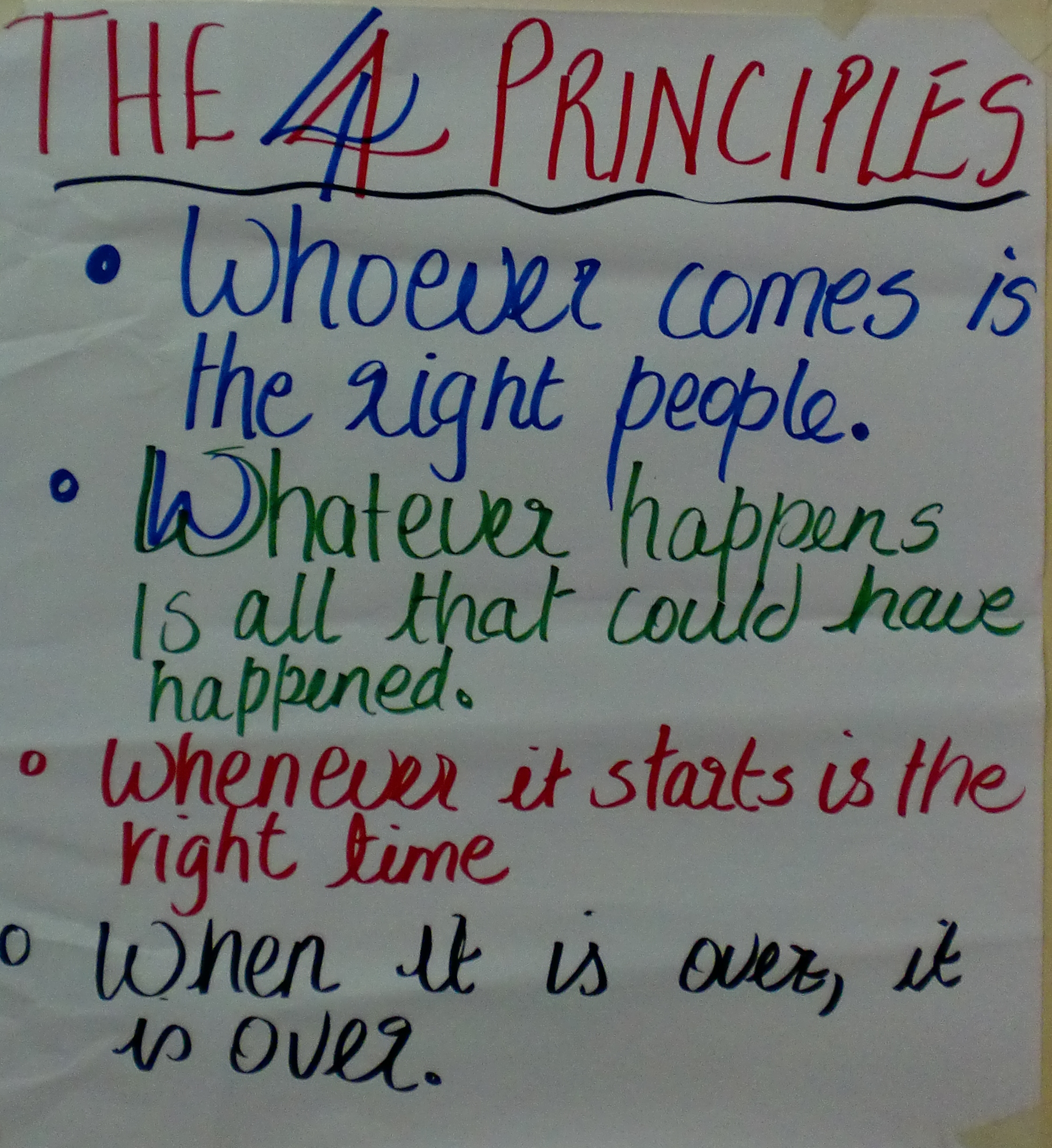It is time to submit a list of topics for which I will be keen to share and speak at the MOE outdoor education.
Though I never thought of specialising in outdoor education, I have been running hundreds and hundreds of outdoor training programs - many teambuildings and many camps. I created most programs and I had to adapt to many and many various types of situations, people, environment,.... I cannot help but wanting to contribute. I believe one the interesting aspect I am able to contribute is the freshness and innocence directly at the source of our designs. Our delivery is dictated by a strong, imperious need to engage everybody which means: every body should want to play and every body could and would. Last, learning should be a natural outcome - hence the idea of facilitation: (facil is french means easy - to facilitate is to make things easier: to support learning because learning is there, ready to be picked up... like a fruit when it is ripe or when the chick gets out of the shell and the mum gently helps breaking the shell).
"Natural" learning is something I should expand on.... I believe it is something many people do not get - or totally undervalue - and it is not their fault... there is a major drift in our modern societies between our natural abilities to learn and where "modern" education is bringing us, a drift to where and how learning really takes place and where our schools are leading us.
Now outdoor education is just one among the many ways to help us deal with the question of learning but it is a powerful one. Personnally, outdoors have always been an attraction because there is something "wholistic" when it comes to being outdoors. In no any order, I am listing below some of the reasons why I think so:
1- outdoors, the body - not just the mind - is part of the experience: how you walk, run, jump, hang on to something (or not)... etc... it all makes a difference. It matters and cannot be left aside as opposed to purely mind-based form of questioning. How the body gets engaged - in itself - should lead to much discussion. In particular we could start a reflexion on action - engagement - being. A funny - but essential way - to look at it: we all know Rodin's sculpture: "The thinker". Question: is the thinker really thinking? Or is he simply bored? German philosopher Nietzsche was saying (and I got this quote quoted by a famous jazzman - which is in itself significant): "Only thoughts that come as we walk are valuable thoughts (worth considering)"
2- outdoors there is no way but thinking about space and dealing with space and managing space... This is essentials when I see all too often how poorly human beings plan and manage and deal with their own space, their personnal space, their learning space, the private or public space. Learning to acknowledge and deal with space... a capital value.... missed, forgotten, ignored...
Now, what are the implications in terms of OE? There are important and relate in my opinion to a mature audience in the first place: dealing with space is about planning and about developing the ability to see through (helicopter view, mapping things, strategising). To reach to this stage, OE has many steps to cover, starting from the basics: dealing with groups, dynamics of groups, organising camps, to the more advanced: facilitating learning (creating learning space, learning climate, learning tools...).
Here the whole question of learning space can be looked at as the question of dealing with learning ecologies. Each outdoor speciality (outdoor sports and activities) offers a specific learning eco-system, with its idiosyncrasies and its richness. Much education can be derived from there. It needs to be looked into behind the technical aspects, but rather, focusing on what can be more universal and/or relate to behavior, skills and attitude. Of course the technical aspects should be kept and integrated within the bigger picture.
Practically, it could mean looking at building curriculum and lesson plans to train the trainers in the relevant aspects.
3- outdoors and dealing with what is free. The greatest tragedy of our modern world(s) is to have lost touch with the magnificence of what is given and provided to us by Nature and the Creator (in a non-religious sense). Sun, air, water to start with. The very tenets of life are so so taken for granted that we ignore them, we even blame them for most things and we hide and cut ourselves from them. As we do so, the very first thing we should have - gratitude (a with it a sense of love, appreciation, humility, acceptance and the whole gamut of values that build proper attitude, skills and character) - is replaced by a sense of loss, frustration, fear and any opposite to what makes life easy, simple and enjoyable (complexities, negative emotions, ...). Of course, outdoor education in relation to THAT (capita letter because THAT = NATURE = outdoors in this context) teaches about freedom and dealing with freedom as human beings, ie the choice we have to make to find our place in this grand scheme of things and in our lives. OE has a role to play in helping
a- develop a sense of appreciation of nature, leading to respect, care etc...
b- connect the physical reality to the meta-physical reality (our dependancy) and highlight/extract from there the set of values people and society need to adhere to to live live fully, happily, together in peace.(courage, tolerance, patience, determination, collaboration, sharing, listening, and hundreds and hundreds more ....)
In other words, OE has a big role to play in dispensing value-based education
4- As a consequence, outdoors teach us about the essential distinction between NEEDS and WANTS. There is no WANTS in the Nature, there are only needs. Another way to put it is that outdoor education is very strong at reminding us all the time that what we want is only possible to the extent that the circonstance, nature, the weather, the geography allow it.
What about NEEDS AND WANTS is essential for any of us? People, we - are running around crazily talking about what we want to do. Our society has created so many wants so that millions of products can be sold, that we have become consuming machine driven by our wants. That - as early as 1930's how Ford was describing his philosophy of mass-production for mass-marketing. Today, even higher education is using the tricks and selling MBAs to any bored executive in its 30's. As professor, author and educationist Mintzberg puts it in one of his book, let's look for "Managers, not MBAs". It is not about what we have but what we do. We need people with the right values and qualities to run our business and institutions: ideals vs greed, patience vs rushing for quick gain, support of the people vs political backfiring etc....
How do we get OUT of the "wanting" zone? How do we learn about something different? Can we "de-condition" ourselves - after 20, 30, 40 years of exposure to a world bombarded with advertising, malls, commercials, fast food, fast cars, fast relationships, fast jobs... What else do we need to learn? How?
OE puts us in touch with nature and nature has the built-in ability to teach about needs, about reality, real causes and real consequences.... The practical implications are many and very powerful and of great consequences:
a- What does a human being really needs to survive: basics of food, body care and personal hygiene, human inter-personal skills so that I can live peacefully with my peers, intra-personal skills so that I remain a healthy, positive individual?
b- to live, play and enjoy: meanings, purposes of being together in a group or a society, role of rules, punishments, rewards, duties
c- connecting back to our natural learning abilities: what am I good at? what do I really enjoy doing? How do I see myself growing? What is my voice (See the Eigth Discipline by Cowey), my vocation, my destiny?
In Singapore context, any of these issues are highly relevant and can be discussed either in a broad context or in very specific, detailed manner.










